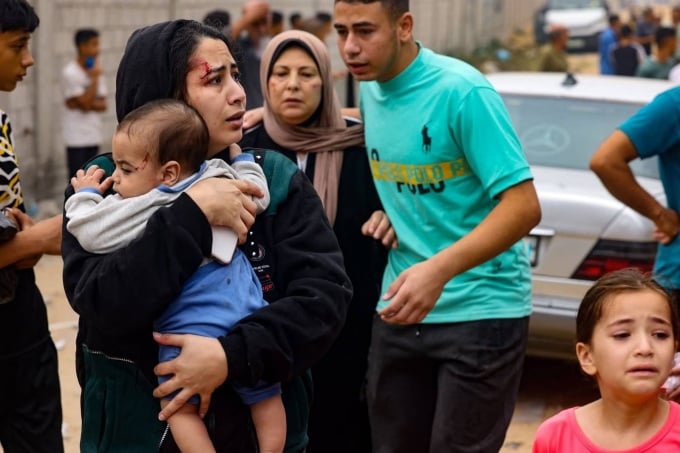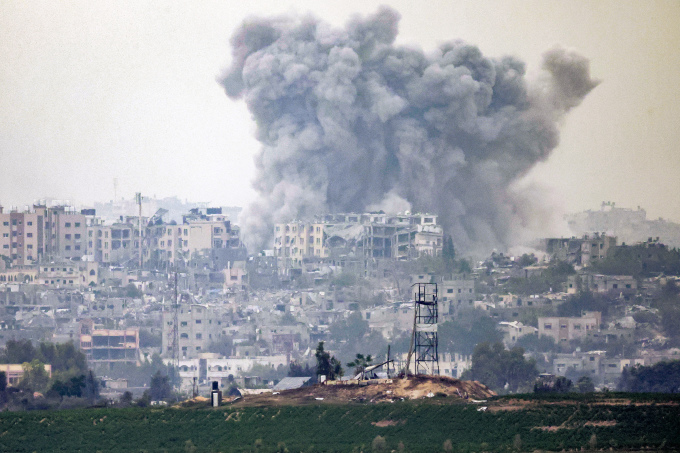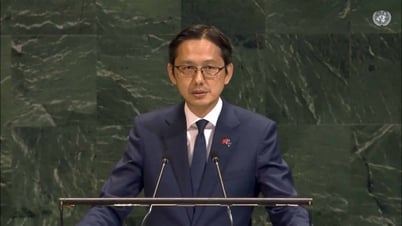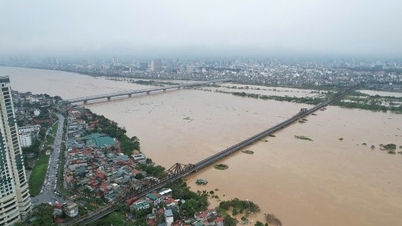Israel faces growing pressure to choose between "destroying" Hamas and preserving the lives of hostages and more than 2 million Gaza civilians.
The Israel Defense Forces (IDF) has recently carried out continuous raids with infantry and tanks in an "expanded offensive" campaign against the Gaza Strip following an unprecedentedly fierce airstrike on October 27.
"The ground of Gaza is shaking," Israeli Defense Minister Yoav Gallant announced on the morning of October 28, describing it as the "next phase" in the war to "wipe out" the Islamic militant group Hamas. "We are attacking both on the ground and underground."
However, Israel's military operations are being conducted in a very densely populated area. Gaza covers an area of 365 square kilometers, but is home to about 2.3 million people, making it one of the most densely populated areas in the world.
Israel's air campaign and ground offensive have left more than 8,000 people in Gaza dead and more than 20,000 injured. About a million people in northern Gaza have been forced to flee their homes, entire neighborhoods have been reduced to rubble, and more than 200 schools have been destroyed, including 29 UN-run facilities.

Gaza residents after an airstrike in Rafah, southern Gaza on October 29. Photo: AFP
As the civilian death toll mounts, Israel faces mounting public anger in the Middle East and the risk of declining support from its allies, raising concerns about the effectiveness of its campaign against Hamas.
“The Israeli forces face a dilemma,” said Shimrit Meir, a former foreign affairs adviser to former Israeli Prime Minister Naftali Bennett. She noted that Tel Aviv’s choice is difficult, as it wants to eliminate the Hamas threat, protect the lives of more than 220 hostages and some 2 million Palestinian civilians, and maintain Western support for its military operations.
The Israeli military has so far used about 10,000 bombs, missiles, and artillery shells of various types in raids on Gaza, double the amount of bombs and shells fired by the US-led coalition to retake the northern Iraqi city of Mosul in March 2017 during the campaign against the self-proclaimed Islamic State (IS), according to the UK-based civilian damage monitoring group Airwars.
The IDF acknowledged that the ground and air campaign would cause serious damage to Gaza's 2.3 million people. "Every victory comes at a price. But to destroy the enemy, there is no other way but to use force to penetrate this territory," IDF spokesman General Herzi Halevi said on October 28.
The IDF says it always tries to comply with international law and minimize casualties by striking precisely at targets identified by Israeli intelligence. It also accuses Hamas of violating international law by using civilians as "human shields" for some 30,000 fighters and storing weapons in a 400-kilometer tunnel system, many of which run under civilian sites such as hospitals and schools.
Hamas officials have called such Israeli claims "baseless and false".
The effectiveness of the IDF air campaign is unclear. Hamas and its Palestinian ally, Islamic Jihad, continue to fire rockets into Israel. Hamas's firing rate has slowed, but analysts say the group may be conserving weapons for a long-term fight.
"The goal should be to eliminate Hamas' military capabilities, especially its ability to fire rockets. That is the biggest threat to Israel's security. It's like having a gun pointed at our heads," Meir said.
Analysts say the IDF's current "widespread offensive" campaign serves several purposes, chief among them being to confuse Hamas commanders.
"What we're seeing is Israeli forces rapidly launching simultaneous attacks. It not only confuses Hamas commanders about what's happening, but also ensures they don't have time to react," said Mick Ryan, a former Australian army general and now a military analyst.
Ryan added that "by conducting multiple operations" both in the air and on the ground, Israel hopes to draw Hamas members out of the tunnels to "detect and neutralize".

Smoke rises from a building hit by Israeli air strikes in Beit Lahiya, northern Gaza Strip on October 27. Photo: AFP
The IDF also said it had killed dozens of Hamas military commanders, including deputy intelligence chief Shadi Barud, who is believed to have planned the October 7 attack on Israeli territory. But observers believe most of Hamas's senior leadership and members are hiding in the tunnel network.
During a 2021 raid on the Gaza Strip, the Israeli Air Force dropped nearly 500 bunker-busting bombs, each carrying a ton of explosives, on Hamas tunnels in just 30 minutes. The IDF tried to lure Hamas fighters into fighting positions by announcing a ground assault. Hamas did not take the bait, however, and the Israeli military later admitted that the enemy suffered few casualties in the bombing.
Analysts say the expanded Israeli offensive in the Gaza Strip is not yet a full-scale operation. Israeli ground troops have penetrated the Strip mainly to gather intelligence to assess the effectiveness of air strikes and hone tactics for the upcoming battle.
"The IDF has learned many lessons and any air campaign is carried out after having intelligence about the location of the tunnels and their depth," said Edward Stringer, a former British air force lieutenant general who oversaw the NATO-led air campaign in Libya in 2011.
According to Stringer, if Israel does not follow this tactic, the only option left is to flatten the entire city, turn it into a wasteland and declare victory. "They will have to walk a fine line between exercising the right of self-defense and causing a humanitarian disaster," he said.
The US has called on Israel to exercise restraint in its offensive, although it supports Tel Aviv's right to self-defense. Nine Arab countries have also condemned the "targeting of civilians", including Hamas attacks and Israel's retaliatory airstrikes.
However, in this attack, the IDF has all but abandoned the "knock on the roof" tactic, in which the Israeli military drops small, non-explosive training bombs on the target building about 10 minutes before launching a large-scale airstrike, to warn residents to leave.
Israeli warplanes also continued to attack southern Gaza despite the influx of migrants from the north. They said the homes of Hamas members were "legitimate targets", even though civilians lived there.
Local residents said the October 25 Israeli raid destroyed several apartment blocks in Khan Younis, about 10 kilometers from the Egyptian border. However, another raid destroyed a Hamas rocket storage facility under a building. Such raids indicate that Hamas has deployed military infrastructure deep in densely populated areas of Gaza.
Robert Pape, professor of political science at the University of Chicago, USA, said they also show why Israel's bombing campaign will have difficulty achieving its goals.
"Israel has no way to separate more than 2 million civilians from Hamas. Asking Gaza civilians to move to the south for safety is a measure that does not make much sense," Pape said.
The professor added that "history shows that large-scale bombing campaigns never break the will of the enemy, and are even counterproductive. That is the mistake that those who want revenge constantly make."
Thanh Tam (According to Financial Times )
Source link




![[Photo] General Secretary To Lam visits Kieng Sang Kindergarten and the classroom named after Uncle Ho](https://vphoto.vietnam.vn/thumb/1200x675/vietnam/resource/IMAGE/2025/10/09/1760023999336_vna-potal-tong-bi-thu-to-lam-tham-truong-mau-giao-kieng-sang-va-lop-hoc-mang-ten-bac-ho-8328675-277-jpg.webp)


![[Photo] Prime Minister Pham Minh Chinh chairs a meeting of the Government Standing Committee on overcoming the consequences of natural disasters after storm No. 11](https://vphoto.vietnam.vn/thumb/1200x675/vietnam/resource/IMAGE/2025/10/09/1759997894015_dsc-0591-jpg.webp)































































































Comment (0)